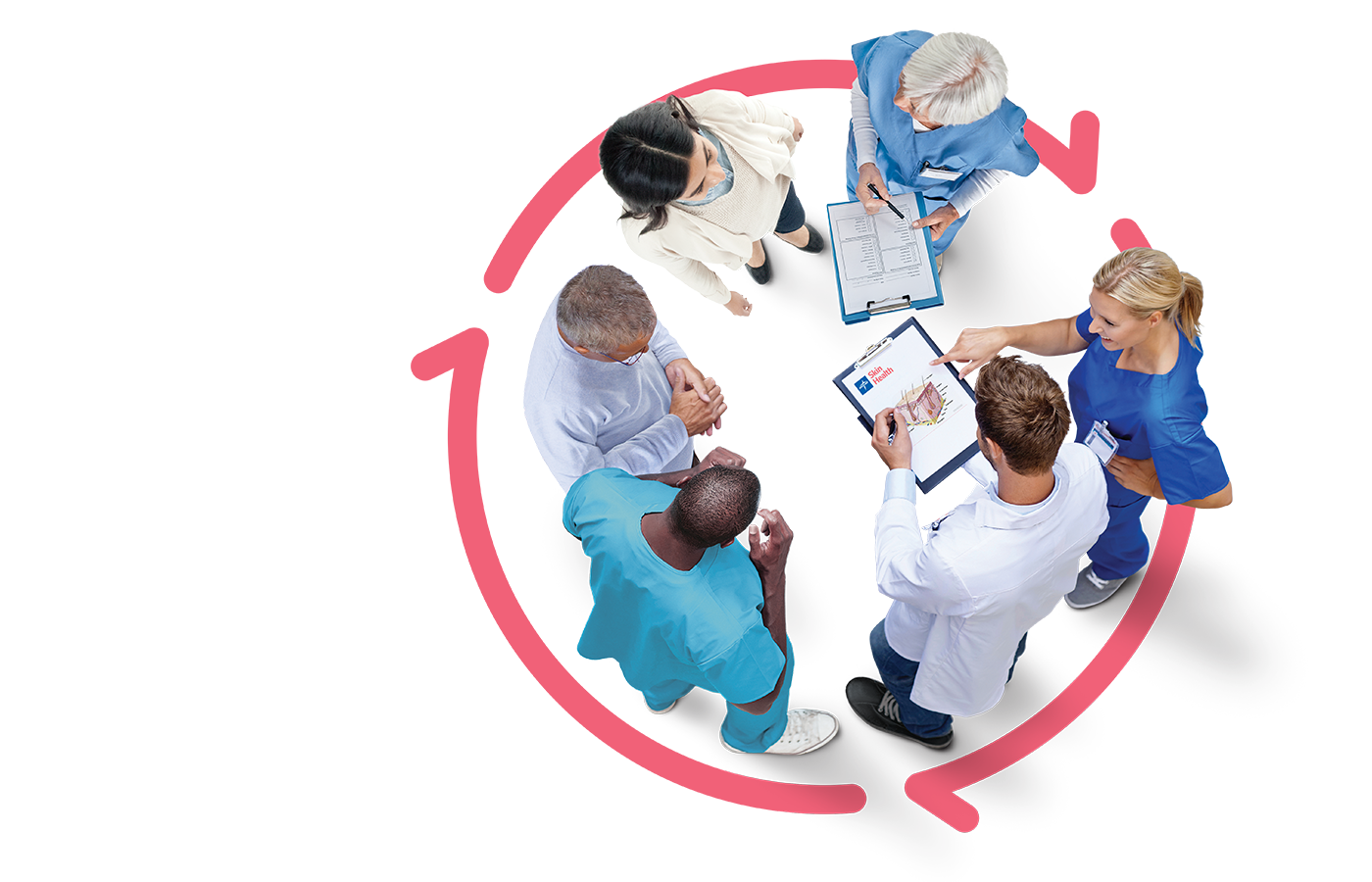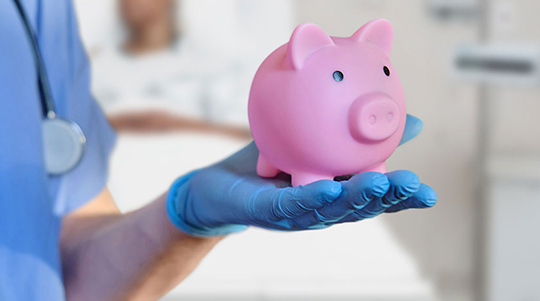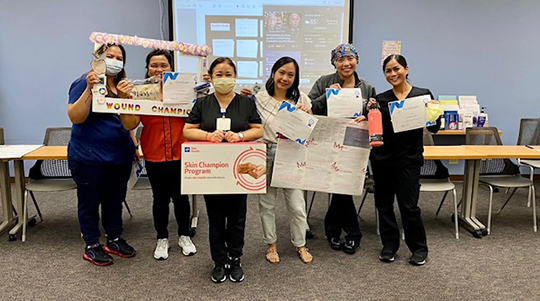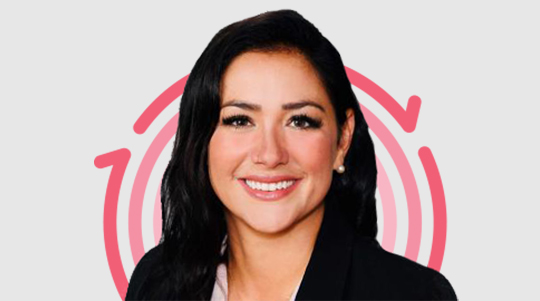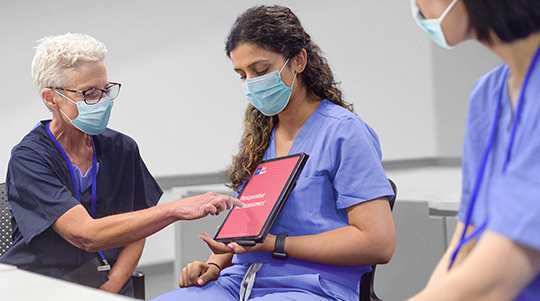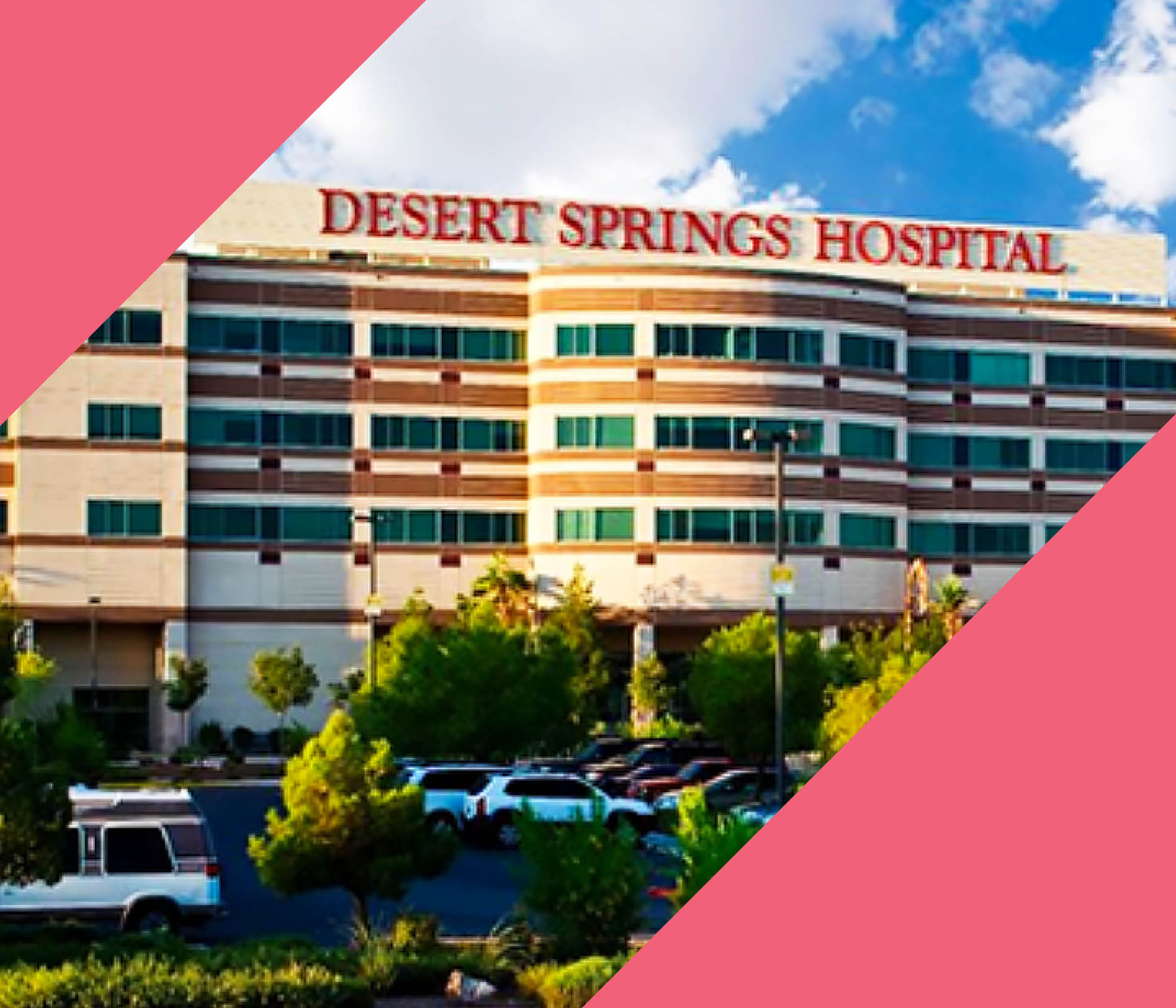
Abstract
Healthcare-associated pressure injuries (HAPIs) are one of the most common, but preventable, hospital associated complications.1 While facilities strive for zero HAPIs, continuing staffing shortages, inconsistent care protocols and products, and limited time for staff training have made it more challenging. The COVID-19 pandemic exacerbated the situation, leading to an increased number of pressure injuries seen on areas of the body not typical for pressure injuries such as hips, shoulders and face.
This case study highlights how Desert Springs Hospital and Medical Center tackled its rising pressure injury rates by partnering with Medline to implement its Skin Health Solution. They assessed HAPI rates and incidence at the start in December 2020. One year later they reassessed and the result was fewer HAPIs and reduced costs. Arlene S. Blanco, MSN-FNP, CWCN presented a poster with results at the 2022 WOCNext conference in Fort Worth, Texas.
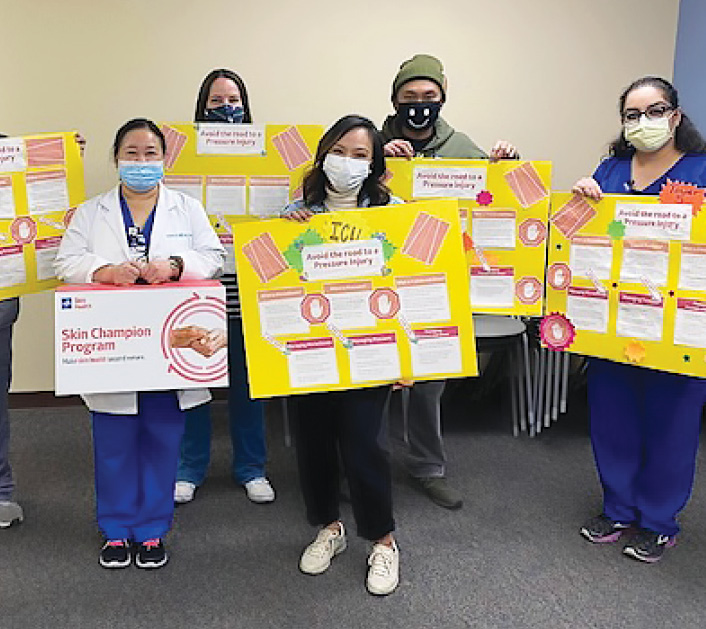
Organization
Desert Springs Hospital and Medical Center
Desert Springs Hospital and Medical Center is a 282-bed acute care facility located in an urban setting a few miles east of the Las Vegas Strip. Desert Springs is a Universal Health Services facility and part of the Valley Health System, a network of six acute care hospitals that provide patient care throughout Las Vegas and southern Nevada. The hospital population is diverse, including many homeless people and patients who visit the bariatric surgical unit.
Challenges
- Rising HAPI rates as a result of multiple factors including proning patients with COVID-19
- Lack of confidence among caregivers to follow evidence-based prevention strategies
- Inconsistency in pressure injury prevention protocols and products
- Limited resources within units to provide staff education and training for preventive care
Actions
Implementing Skin Health Solution included the following:
- Gathered data on pressure injury rates and incidence
- Assessed pressure injury prevention protocols
- Analyzed skin health products for redundancy and gaps
- Created customized skin health guidelines
- Launched a comprehensive, turnkey educational solution
- Built a Skin Champion team representing various hospital units
- Reviewed progress monthly with dedicated Medline specialist
Results
- Total number of HAPIs declined by 68.5%
- Incidence of HAPIs declined by 69%
- Cost savings for Stage 2 pressure injuries was approximately $300,000
- Pressure injury prevention education increased
- Staff felt empowered and energized to follow best practices
- Skin Champion team was built and continues to meet regularly
- Adoption of preventive best practices and effective use of skin care products increased
Challenges
Healthcare-associated pressure injuries (HAPIs) are one of the most common, but preventable hospital-associated complications.1 Studies show that HAPIs occur in up to 34% of patients admitted to hospitals worldwide, leading to longer hospital stays, increased morbidity and decreased overall quality of life.2 In the United States, HAPIs affect approximately 2.5 million patients annually at a cost of approximately $26.8 million.3
In addition, ongoing staff shortages have reduced the time and resources available for education and training on PI preventive measures. For instance, caregivers may have the right products, but may still miss opportunities for proper skin moisturization and frequent turning and repositioning.
When the COVID-19 pandemic led to surges in higher acuity patients and an even greater squeeze on resources, pressure injury prevention often became a lower priority.
“Like any other hospital during COVID, Desert Springs faced challenges with pressure injuries occurring in places they typically wouldn’t be seen because of proning—a lot of pressure injuries on the face, hips and shoulders,” says Angela Jackson, Medline Skin Health specialist.
At the same time pressure injury rates were increasing, caregivers were reporting high levels of stress, exhaustion and burnout.4 “Our nurses were tired, scared, and working longer and extra hours in order to provide care to an increasing number of COVID-19 patients,” says Arlene S. Blanco, MSN-FNP, CWCN, nurse education lead at Desert Springs. As the peak of COVID in Las Vegas started to wane, Blanco decided it was time to find a solution.
“Our nurses were tired, scared, and working longer and extra hours in order to provide care to an increasing number of COVID-19 patients.”
Arlene Blanco
MSN-FNP, CWCN, nurse education lead at Desert Springs
Actions
Desert Springs had been purchasing Medline skin care products, but had not yet benefited from the full Skin Health Solution. In November 2020, Blanco contacted Jackson to get started. “After reviewing the content of the program, I agreed to implement it at our facility because it contains all the necessary evidence-based information and products we need for pressure injury prevention,” Blanco notes.
There are three integrated elements to the Skin Health Solution: Best Practice Guidance, Education and Training, and System of Products—and it all starts with the Discovery Assessment, the key to uncovering gaps and opportunities for transformation.
“The whole purpose of this is to find and bridge the gap between what leadership thinks is happening and what is actually happening on the floor.”
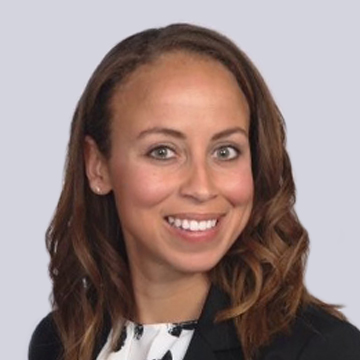
Angela Jackson
Medline Skin Health specialist
Discovery Assessment
In December 2020, Jackson conducted her initial Discovery Assessment at Desert Springs, including an on-site storeroom review, as well as quick and anonymous phone interviews with staff and leadership. Typical survey questions cover skin care routines, turning and repositioning, use of support surfaces and preventative dressings.
“The whole purpose of this is to find and bridge the gap between what leadership thinks is happening and what is actually happening on the floor,” Jackson says. “Our job and our goal is to find those missing pieces and determine where there’s an opportunity to educate, get a new product or reduce SKUs.”
In January 2021, Jackson presented her findings from the assessment, including recommendations on the actions and activities that would help reduce their pressure injury rates.
Best Practice Guidance
Medline’s Skin Health Solution was developed by clinicians for clinicians to help reduce care variation and drive best practices. While the National Pressure Injury Advisory Panel provides detailed guidelines, it can be difficult for stretched-thin and stressed-out caregivers to have it all catalogued by memory in their heads. Many facilities have the guidelines available, but not accessible.
This was one key area of improvement that Jackson facilitated at Desert Springs.
“You would be amazed at how many times I’ve asked if there are skin care guidelines or wound care guidelines and there might be, but staff nurses don’t know where to find them,” Jackson explains. That’s why part of the Skin Health Solution focuses on customizing guidelines that work for each individual facility.
Jackson worked side by side with Blanco and her wound care team to determine what guidelines they needed, then tailored it to the facility formulary and ensured that each recommended protocol followed current evidence-based best practices. She printed copies for the facility to post in the storeroom, at the nurses’ stations and other easily visible locations.
Education and Training
For Desert Springs, the most transformative element of the Skin Health Solution was the education and training they received. Blanco explains there was so little time for education before implementing the Skin Health Solution, “She appreciated the fact that we had so many educational resources ready to go on the topics she wanted to cover and it saved her time,” Jackson says.
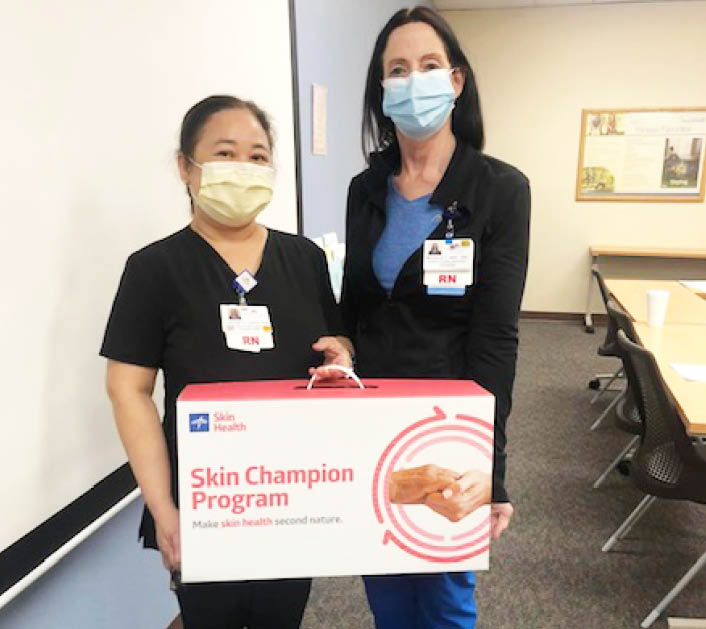
“We look forward to meeting every month, and we find joy in making these posters together.”
Arlene Blanco
MSN-FNP, CWCN, nurse education lead at Desert Springs
A key component of the Skin Health Solution education is the Skin Champion Program. In January 2021, Desert Springs held their first Skin Champion meeting. “We were uncertain if the nurses could commit their own time to attend the monthly meetings, so it was important that the administration and unit directors supported the staff’s volunteer participation,” Blanco says.
About five team members still regularly meet once a month to complete each of the ready-made modules that cover essential pressure injury prevention topics. They view the short presentation together, then reinforce the learnings with a hands-on project, creating posters to hang in their units and review during morning huddles. Blanco makes it fun by providing plenty of art supplies. “We look forward to meeting every month, and we find joy in making these posters together.”
Raffle prizes encourage attendance at the meetings as well. “We make sure that they’re engaged all the time,” Jackson says.
“The main goal is to refresh staff knowledge and get them excited again about skin and wound care.” Some team members have even attended on their days off.
In the end, Desert Springs formed what Blanco calls “a community of wound experts who shared the same vision of protecting patients from harm.”
As part of her ongoing commitment to her customer, Jackson also coordinated additional education for the staff, including five-minute lunchtime live video instructions. “I would pop on the screen and provide quick reminders on topics such as our Remedy color-coded skin care system,” Jackson explains.
System of Products
Twice a year, Jackson does in-servicing on all of the Medline Skin Health products. Blanco supplements that with skills fairs, setting up booths to complement the Skin Champion module topic. Jackson provides at-a-glance hand-outs for future reference.
“What we saw through the implementation of the Skin Champion Program was an increase in usage of products they already had,” Jackson says. In other words, the education led to proper utilization. “There were some great ‘Aha’ moments, reminders to use the products for what they were meant for.”
Some products were added to the system due to an increase in patient proning, including a very thin Optifoam to protect the face.
Results
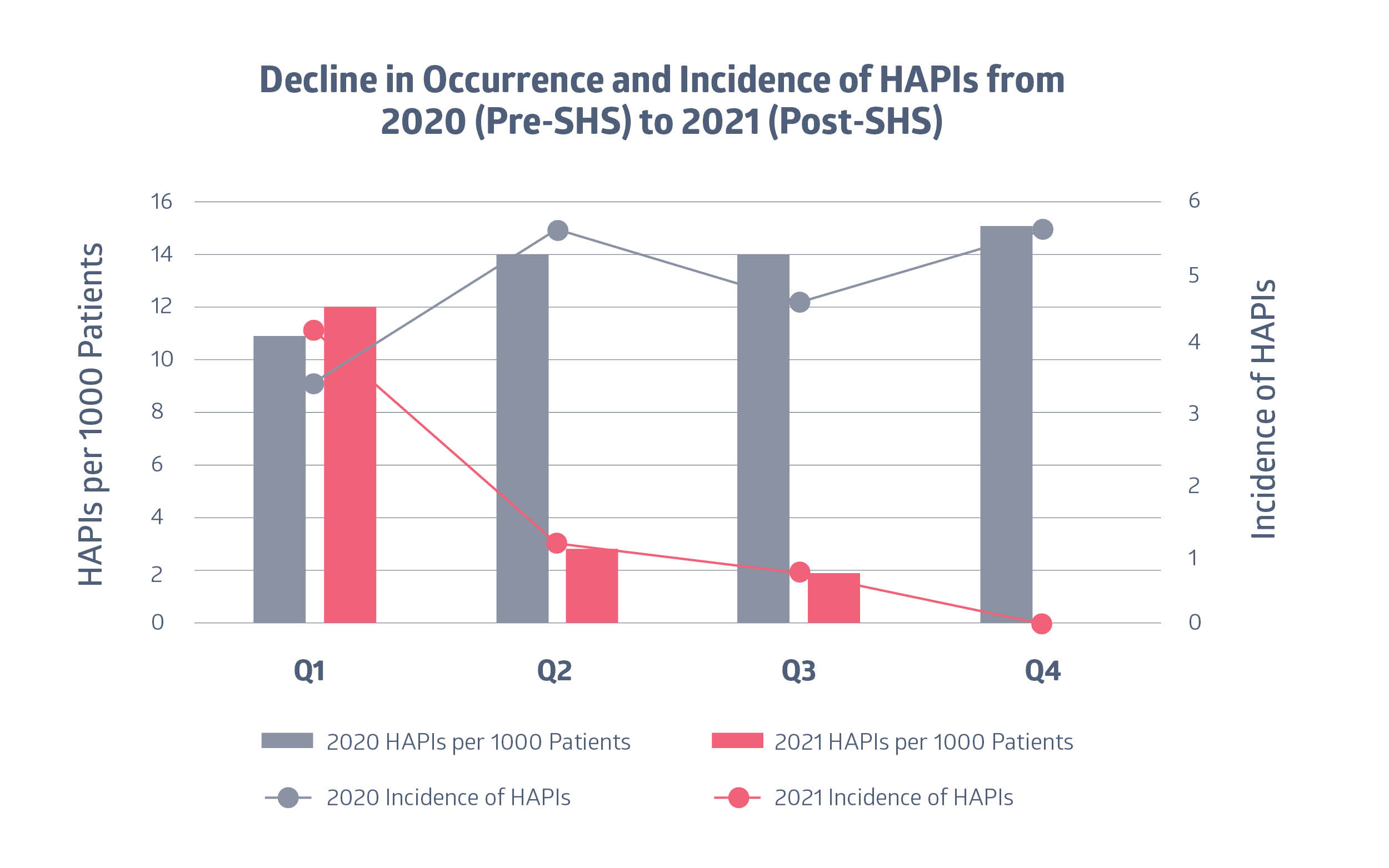
The power of the Skin Health Solution is seen in the numbers. During 2020, before implementation, a total of 11,323 inpatients were evaluated with 54 HAPIs. In 2021, after SHS, there were 11,628 patients evaluated with 17 HAPIs.
Overall, Desert Springs saw a 68.5% annual decline in the total number of HAPIs and a 69.3% drop in PI incidence. They also saved money, an estimated annual savings of $300,000 on the prevention of Stage 2 pressure injuries.
“Implementation of the Skin Champion Program shows a direct decrease in healthcare-associated pressure injuries,” states Medline Skin Health clinician Katie James, BA, RN, CWCN. “It’s clear that a concerted, directed effort in pressure injury education can lead to a dramatic decrease, even with staff shortages. To me, that’s a light bulb moment,” she says. “You can have all the right products on the shelf, but unless you teach people how to use them, it isn’t enough.”
68.5%
decline in total HAPIs
Focusing on education and building a Skin Champion team also boosted caregiver confidence. “My team’s morale is up, and they feel empowered to promote prevention interventions among their peers,” Blanco says. “They have become the mentors and educators to others in their respective units, and that helps keep them engaged.”
“My team’s morale is up, and they feel empowered to promote prevention interventions among their peers.”
Arlene Blanco
MSN-FNP, CWCN, nurse education lead at Desert Springs
Blanco says she’s proud of their significant decrease in HAPIs, as well as the increase in nursing staff who are following prevention protocols and taking pride in their work—work that is ongoing.
Monthly meetings keep staff engaged and “reaching our goals,” Blanco says. “We continuously apply the pressure injury prevention initiatives we learned through the Skin Health Solution program,” she adds.
Desert Springs is continuing the Skin Health Solution program, and HAPI rates remain low. “I’m so grateful that Medline has this kind of program that supports the continuing education of the Skin Champions.”
References:
- Gupta P, ShijuS, Chacko G, Thomas M, et al. (2020) A quality improvement programme to reduce hospital-acquired pressure injuries. BMJ Open Qual. Jul;9(3):e000905. doi: 10.1136/bmjoq2019-000905
- lderden, , Rondinelli, J., Pepper, G., Cummins, M., & Whitney, J. (2017). Risk factors for pressure injuries among critical care patients: a systematic review. International journal of nursing studies, 71, 97-114. http://dx.doi.org/10.1016/ijnurstu.2017.03.012
- Padula WV, Delarmente (2019) The national cost of hospital-acquired pressure injuries in the United States. Int Wound J. Jun; 16(3):634-640. doi: 10.1111/iwj.13071. Epub2019 Jan 28.
- The Mental Health of Healthcare Workers in COVID-19. (2020). Mental Health America. Retrieved July 25, 2022, from https://mhanational.org/mental-health-healthcare-workers-covid-19
